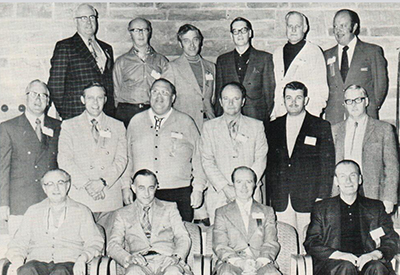5 Types of Consent: Part 2 — Implied: Existing Business Relationship

Feb 3, 2019
Canada’s new anti-spam law (CASL) was passed in December 2010, and following a Governor in Council order it entered into force on July 1, 2014. The law helps to protect Canadians while ensuring that businesses can continue to compete in the global marketplace. Part 1 explored express consent. Here in Part 2: Implied consent: existing business relationship.
There are three types of implied consent. All three require proof. According to the CRTC, all three are “generally time-limited. It is typically a period of two years after the event that starts the relationship (e.g., purchase of a good). For subscriptions or memberships, the period starts on the day the relationship ends.” Once again you must keep records of how you obtained implied or express consent, since in both cases you have the onus to prove consent.
Implied consent — existing business relationship
This includes customers and interested prospects. The CRTC states it this way, “The recipient has made, or inquired about, a purchase or lease of goods, services, land or interest in land, a written contract or the acceptance of a business, investment or gaming opportunity from you. Keep records of how you obtained implied or express consent, since in both cases you have the onus to prove consent.” This has a two-year time limit, meaning the individual must purchase again, request a quote or a demo within that two-year period, in which case the two-year clock resets to that date.
Implied consent — section 6
(9) Consent is implied for the purpose of section 6 only if
(a) the person who sends the message, the person who causes it to be sent or the person who permits it to be sent has an existing business relationship or an existing non-business relationship with the person to whom it is sent;
(b) the person to whom the message is sent has conspicuously published, or has caused to be conspicuously published, the electronic address to which the message is sent, the publication is not accompanied by a statement that the person does not wish to receive unsolicited commercial electronic messages at the electronic address and the message is relevant to the person’s business, role, functions or duties in a business or official capacity;
(c) the person to whom the message is sent has disclosed, to the person who sends the message, the person who causes it to be sent or the person who permits it to be sent, the electronic address to which the message is sent without indicating a wish not to receive unsolicited commercial electronic messages at the electronic address, and the message is relevant to the person’s business, role, functions or duties in a business or official capacity; or
(d) the message is sent in the circumstances set out in the regulations.
Definition of existing business relationship
(10) In subsection (9), existing business relationship means a business relationship between the person to whom the message is sent and any of the other persons referred to in that subsection — that is, any person who sent or caused or permitted to be sent the message — arising from
(a) the purchase or lease of a product, goods, a service, land or an interest or right in land, within the two-year period immediately before the day on which the message was sent, by the person to whom the message is sent from any of those other persons;
(b) the acceptance by the person to whom the message is sent, within the period referred to in paragraph (a), of a business, investment or gaming opportunity offered by any of those other persons;
(c) the bartering of anything mentioned in paragraph (a) between the person to whom the message is sent and any of those other persons within the period referred to in that paragraph;
(d) a written contract entered into between the person to whom the message is sent and any of those other persons in respect of a matter not referred to in any of paragraphs (a) to (c), if the contract is currently in existence or expired within the period referred to in paragraph (a); or
(e) an inquiry or application, within the six-month period immediately before the day on which the message was sent, made by the person to whom the message is sent to any of those other persons, in respect of anything mentioned in any of paragraphs (a) to (c).
Marginal note: clarification
(11) For the purposes of subsection (10), the following organizations are considered to be businesses:
(a) a cooperative as defined in subsection 2(1) of the Canada Cooperatives Act;
(b) a cooperative corporation as defined in section 2 of the Cooperative Credit Associations Act; and
(c) any similar organization incorporated under an Act of Parliament or the legislature of a province.
Marginal note:Clarification
(12) If a person has an existing business relationship with another person in accordance with subsection (10), and the business is sold, the person who purchases the business is considered to have, in respect of that business, an existing business relationship with that other person.
Photo source: rawpixel on Unsplash











